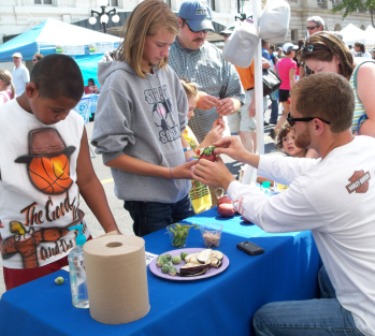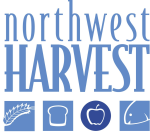 The Ask
The Ask
To access plant sales as a gleaning resource, first contact the people organizing the plant sale and offer your program as an option for any fruit or vegetable plants that might be left over after the sale. Master Gardener plant sales are great because they grow high quality plants and have a diversity of species and varieties. Don’t be afraid to cold-call or visit an advertised plant sale and ask about the plants left over after the sale. They might just get thrown out, and there is no harm in asking. If the plant sale organizers agree to participate and there are plants available to distribute, contact food banks, emergency services providers, community gardens, and shelters to inform them about the opportunity. Call as many organizations and people as you deem necessary, depending on how many plants the sale is willing to donate and how much time you have to move them.
Transportation and Distribution
Be sure to ask plant sale organizers if you can take the trays that the plants are in or if they would like trays returned. If they need trays returned, bring boxes to pack plants into. This takes a long time for a lot of plants, so bring volunteers to help out.
Having access to vehicles with ample space such as minivans and pickup trucks is extremely helpful, as they can move quite a few flats of plants in one trip. When possible, have the agencies receiving the plant starts pick them up. Depending on the available varieties of plants, it is important to make sure that each agency receives a diverse variety of vegetables but while still taking enough of the abundant plant starts such as tomatoes and peppers.
When distributing to community and school gardens, ask for a “wish list” of the number and types of vegetable and herb plants they would like. While the gleaned plants probably will not meet all of their needs (or wishes!), the lists can give you an idea of what each program can use and can help you fairly divide plants so that each program gets what they can use.
Be sure to include care and planting directions with the seedlings if distributing directly to hunger relief programs (food banks, meal programs, mobile services, etc.) to help ensure that every plant makes it to maturity. Also, be sure to water often while the plants are in your care, at least once a day but preferably twice a day in dry climates.
Impact
The gleaning program in Yakima made a conscious effort not to track the plant starts or produce that the starts produced. Tracking would have been a logistical nightmare, so instead, the program collected qualitative evaluations and stories regarding the impact of the plant starts on hunger relief programs in the community.
At a recent Food Bank Coordinator’s meeting in Yakima, the coordinator of the Zillah Food Bank mentioned how much they appreciated last years’ plants:
“It really yielded a lot for us because people didn’t just bring the tomatoes [they grew from the plants we distributed], they brought back other things from their garden…We got a diversity that we wouldn’t have otherwise. They [the plants] went well and were received well.”
Clients and others grew so much from those plants that they donated produce back to the food bank. The White Swan Food Bank also reported clients donating squash they had grown from the seedlings they received at the food bank, and the OIC Food Bank of Yakima reported that clients brought back tomatoes they had grown from donated plants. Selah Food Bank reported receiving donations of spinach and Swiss chard all year long grown from donated seeds.

 The Ask
The Ask